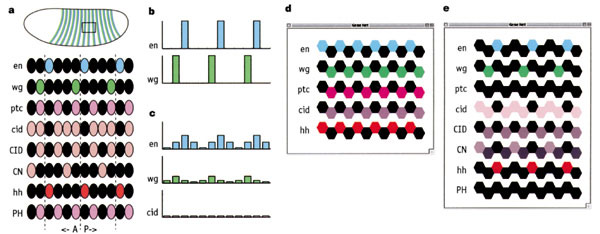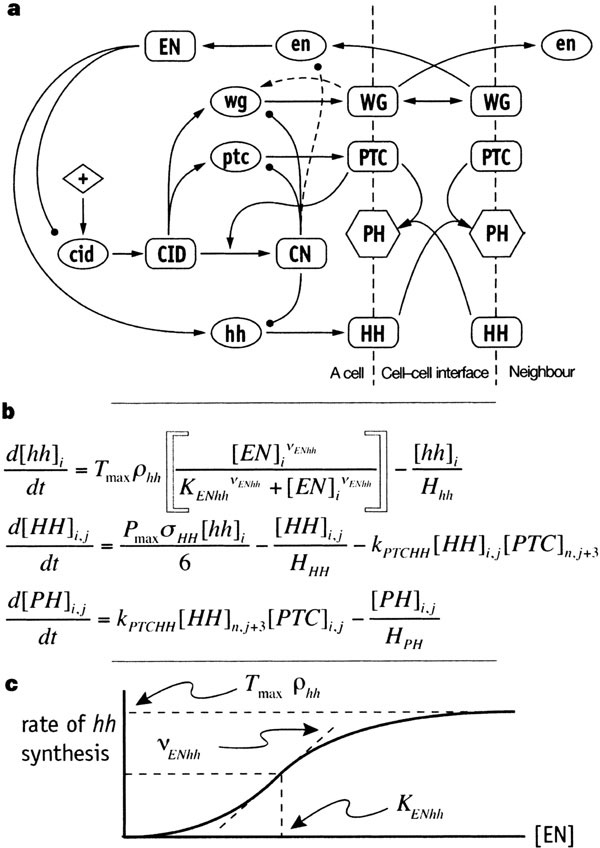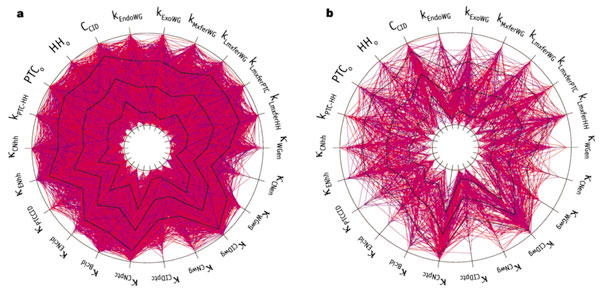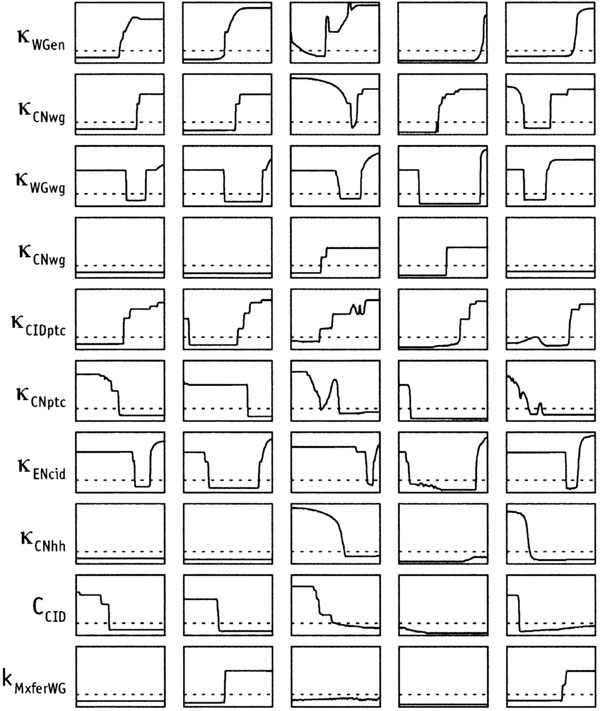(this presentation first appeared at http://emergent.brynmawr.edu/eprg/?page=ModulesInGeneticNetworks)
Modules in Genetic Networks
A presentation for the Bryn Mawr College Working Group on Emergent Things
Ted Wong, Oct. 28, 2003
Von Dassow et al. 2000. The segment polarity network is a robust developmental
module. Nature 406:188-192
Context:
How does the Drosophila melanogaster larva go from having a continuous
gradient of morphogens to having discretely bounded segments?
- Segmentation genes divide the embryo into 14 parasegments.
- Segmentation genes are of three classes, which act sequentially.
- Gap genes divide the embryo into several regions, each containing
several parasegments.
- Specific combinations of gap-gene proteins activate expression of
specific pair-rule genes.
- Segment polarity genes then maintain repeated structures within
the segments.
- The main segment polarity genes: wingless (wg),
hedgehog (hh), engrailed (en).
Gap and pair-rule genes can be active after the initial pattern is
established, so expression of the segment polarity genes must occur in the same
location despite varying expression levels of the pair-rule genes.
Claim: The segment polarity genes must be regulated such that their
expression patterns are robust against different inpuits from the pair-rule gene
products.
Question:Given what is known about how the segment polarity genes
regulate each other, do they form such a robust module?
The desired pattern and its development:

Problem: The computer simulation requires almost 50 parameters, and for
most of these we don't have any idea what would be realistic parameters. So: are
there any parameter sets that give the desired robustness?

Surprise: yes, and in fact there are many parameter sets that work.

How robust is the robustness?

Von Dassow et al:
"Why should the segment polarity mechanism be so robust? Varying parameter
values is proxy for mutations of small effect, and variation in initial
conditions mimics one aspect of developmental 'noise'. We are exploring how much
developmental noise embryos experience, which may explain why gene networks need
buffering. Alternatively, in the evolution of segmentation there may have been
pressure to neutralize mutations of small effect."
So, two suggested reasons for the robustness to evolve:
- to stabilize development against variability (either from environmental
variation or from imprecise prior patterning)
- to stabilize development against small mutations



